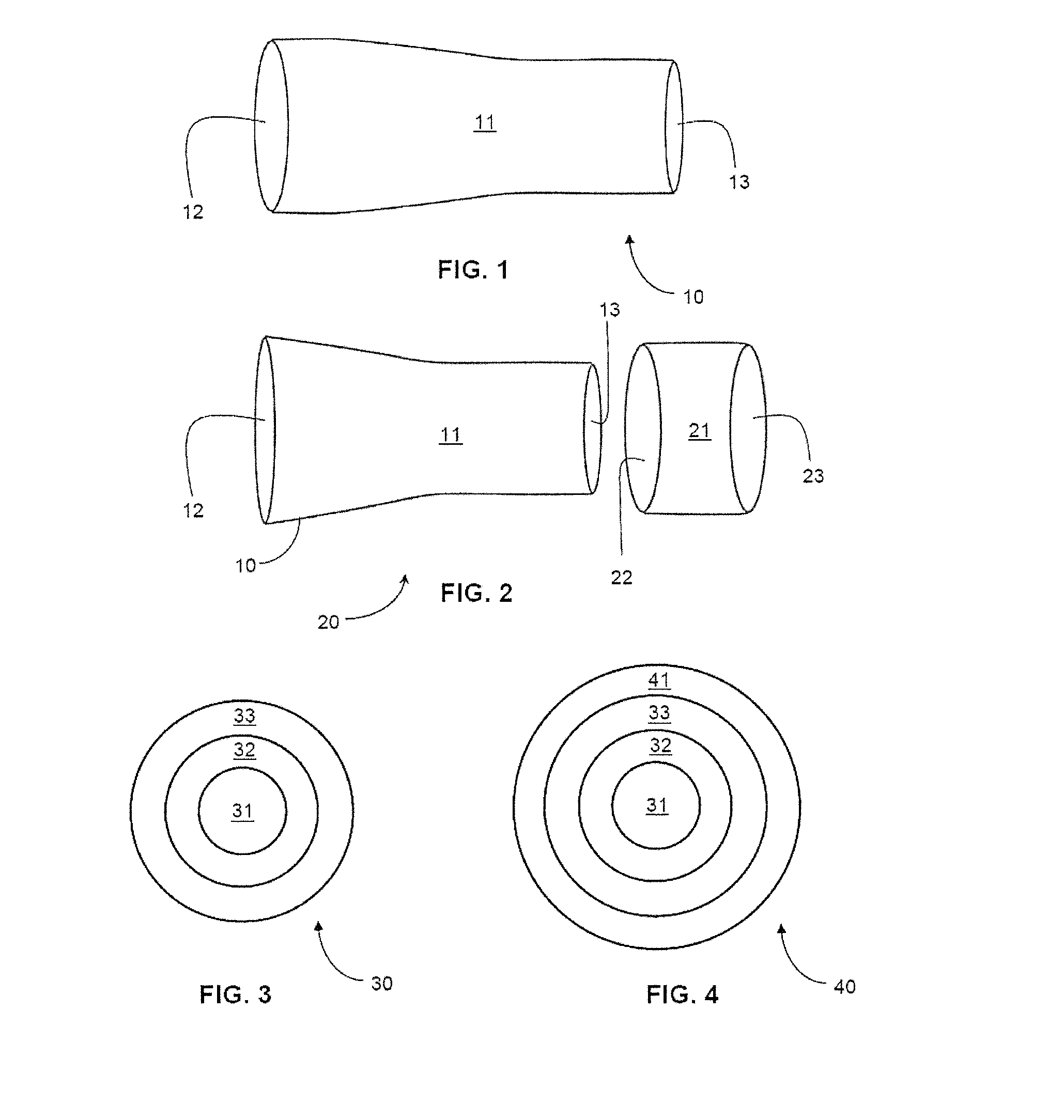High voltage transmission line cable based on textile composite material
a technology of textile composite materials and transmission lines, applied in the direction of power cables, cables, insulated conductors, etc., can solve the problems of difficult to separate fullerenes from other products, difficult to use gaseous hydrocarbon atmosphere as an industrial production method, and inability to meet the requirements of high-voltage transmission lines
- Summary
- Abstract
- Description
- Claims
- Application Information
AI Technical Summary
Benefits of technology
Problems solved by technology
Method used
Image
Examples
example no.1
Example No. 1
[0140]A Kevlar rope, at a target diameter of 1.0 mm, made of 8 Kevlar yarns of 58.8 tex, having a tensile strength of at least 200 cN / tex each, was produced on a ShP-12-4 machine and was used as a core for braiding over it a sleeve-coat. The Quartz coat, made of quartz yarns of 17×4×1 (68 tex) was produced on a ShP-12-4 braiding machine.
[0141]The obtained Kevlar-quartz substrate of 1.5 mm was drawn at a velocity of 1.0 m / sec, through a basin, which contained a peat solution extracted in xylol, at a concentration of 3% w / w hydrocarbons per xylol. The immersed substrate was conveyed, via a tube alloy, situated in the mid-axis of the pyrolysis chamber, heated at 650° C., pulled manually at same velocity. The total added weight of the carbon mass over the core was predetermined at 10% w / w.
example no.2
Example No. 2
[0142]A CCE made according to Example 1 above was coated with an additional carbon layer by drawing it at a velocity of 5.0 m / sec through a furnace heated at 1100° C., which contained a pyrolysis camber with an immersion basin, that contained a peat composite solution of carbon and hydro-carbonyls metal at a concentration ratio of 20:1, extracted in xylol, so its relative concentration of hydrocarbons per xylol was of 6% w / w. The immersed CCE was conveyed, via a properly adjusted tube alloy, which was situated in the mid-axis of the pyrolysis chamber.
[0143]The obtained CCE, with the double carbon layers, was pulled out by a winding machine at the same velocity. The final total added carbon mass weight was 15% w / w.
example no.3
Example No. 3
[0144]CCEs that were prepared according to Examples 1 and 2 were exposed to a blowing process in a “Boulat” unit, heated at a 900° C., and were coated with platinum metal. The resulted catalyst was tested on VAZ-2106 car (A-76 petrol) by using a AFA-121 (focused at CO) and UG-2 (focused at carbon and hydrogen). Tests results indicated that the neutralization rate was 95% at 200° C.
PUM
| Property | Measurement | Unit |
|---|---|---|
| diameter | aaaaa | aaaaa |
| diameter | aaaaa | aaaaa |
| melting point | aaaaa | aaaaa |
Abstract
Description
Claims
Application Information
 Login to View More
Login to View More - R&D
- Intellectual Property
- Life Sciences
- Materials
- Tech Scout
- Unparalleled Data Quality
- Higher Quality Content
- 60% Fewer Hallucinations
Browse by: Latest US Patents, China's latest patents, Technical Efficacy Thesaurus, Application Domain, Technology Topic, Popular Technical Reports.
© 2025 PatSnap. All rights reserved.Legal|Privacy policy|Modern Slavery Act Transparency Statement|Sitemap|About US| Contact US: help@patsnap.com



